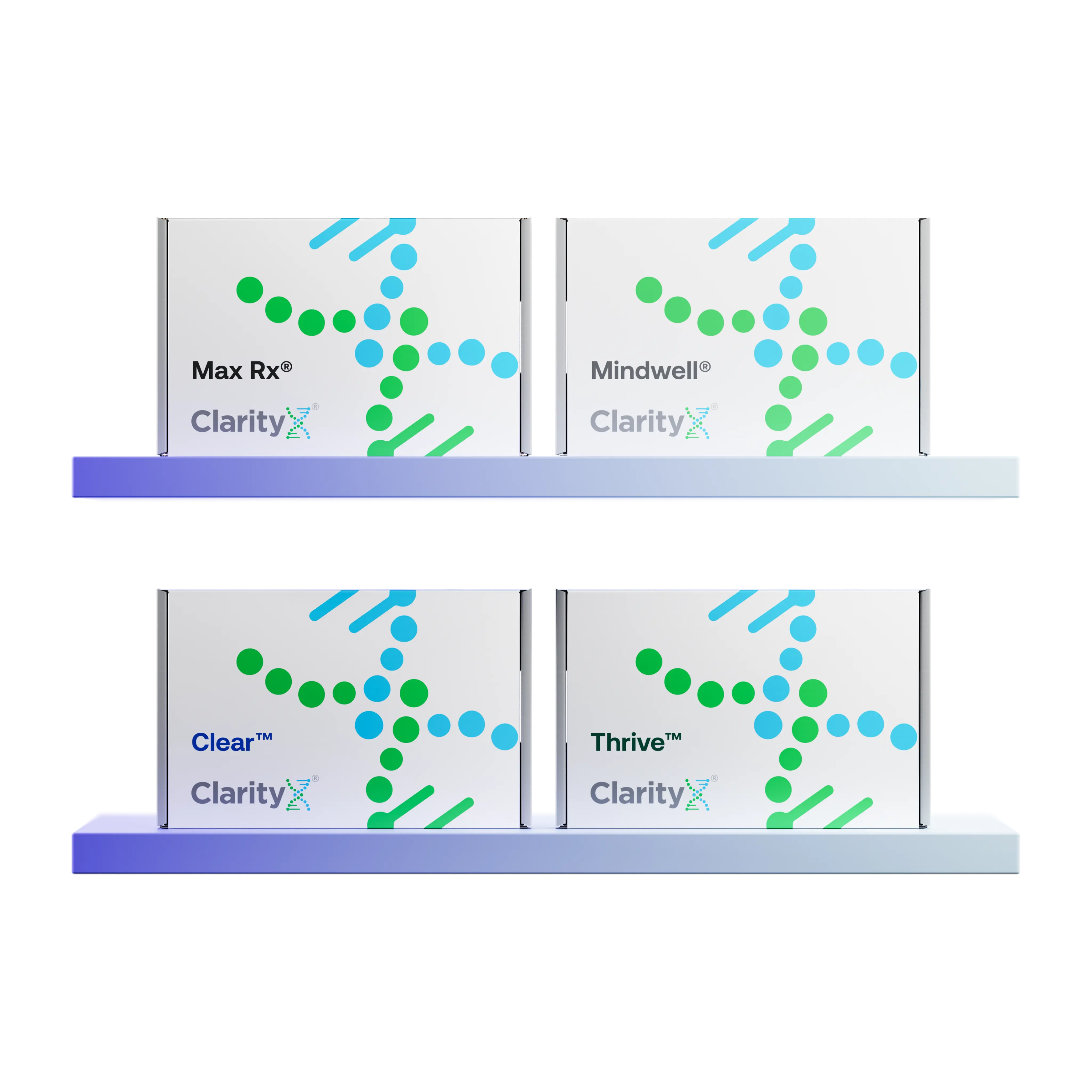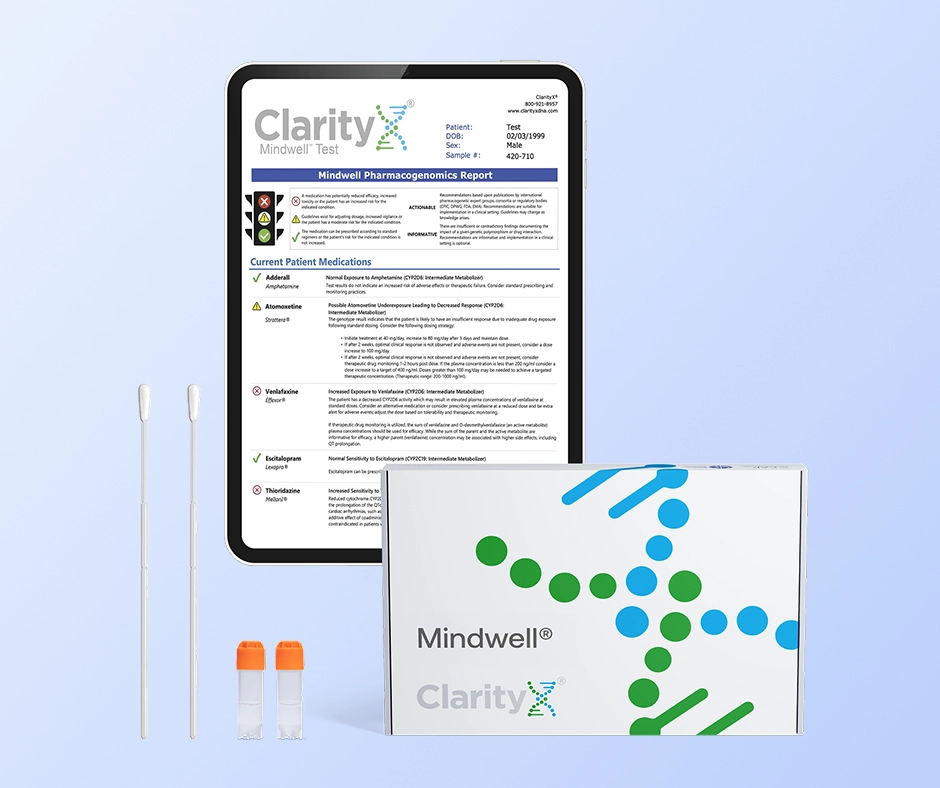Key Highlights
- Anhedonia is the inability to feel joy or pleasure, a core symptom of depression.
- It's more than sadness; it's a loss of interest in activities you once loved.
- Anhedonia is strongly linked to major depressive disorder and other mental health conditions.
- The two main types are social anhedonia (disinterest in people) and physical anhedonia (disinterest in physical sensations).
- It's associated with changes in brain activity, particularly in the dopamine-driven reward centers.
- Treatments are available to help manage the underlying cause and restore your ability to experience pleasure.
Introduction
Do you ever feel like the things that used to bring you joy just don't anymore? This loss of interest in life's pleasures is known as anhedonia. It’s not just about having a bad day; it’s a persistent inability to feel happiness from activities you once found rewarding. Anhedonia is a significant mental health symptom that can affect your relationships, motivation, and overall well-being. Understanding its signs is the first step toward getting help and rediscovering joy.
What Is Anhedonia?
The word anhedonia literally means "without pleasure." It describes a reduced ability to gain enjoyment from life's experiences. You might find that listening to your favorite music, eating a great meal, or spending time with loved ones no longer brings you any happiness.
This condition is a hallmark symptom of major depressive disorder (MDD) and a key indicator doctors look for. Rather than just a shift in interests, anhedonia is a profound loss of the capacity for the experience of pleasure.
Clinical Definition of Anhedonia
In clinical settings, anhedonia is one of the two core symptoms of depression. The Diagnostic and Statistical Manual of Mental Disorders (DSM-5) defines it as a "markedly diminished interest or pleasure in all, or almost all, activities most of the day, nearly every day."
To be diagnosed with major depression, a person must exhibit either a depressed mood or anhedonia. It's a symptom that profoundly impacts a person's quality of life by disconnecting them from the rewarding experiences that make life feel worthwhile.
How Anhedonia Differs from Apathy
Although anhedonia and apathy often occur together, they are distinct. Apathy is a lack of motivation, feeling, or concern. If you have apathy, you might not have the energy or desire to start an activity.
Anhedonia is specifically about the loss of pleasure. You might still have the motivation to go to a party, but you get no joy from the experience.
Think of it this way: With apathy, you don't want to do anything. With anhedonia, you may do things but feel no reward from them. This distinction helps mental health professionals tailor treatment.
Types of Anhedonia
Anhedonia is not a one-size-fits-all experience. The two primary types are social anhedonia (lack of enjoyment from interpersonal situations) and physical anhedonia (inability to feel pleasure from physical sensations).
Social Anhedonia
Social anhedonia is a loss of interest in social contact and a diminished ability to feel pleasure from being with other people. You might feel disconnected from even close friends or family and prefer to be alone. Activities like attending a party may feel draining instead of rewarding. This can lead to significant social withdrawal and isolation.
Physical Anhedonia
Physical anhedonia involves a reduced ability to experience pleasure from physical sensations. Things that are typically enjoyable like eating your favorite food, listening to music, or feeling a warm hug may leave you feeling empty or numb. Your favorite foods might taste bland, or beautiful scenery might not stir any emotion.
Specific Forms: Musical and Sexual Anhedonia
Anhedonia can also be specific. Musical anhedonia is when an individual cannot derive pleasure from music. Sexual anhedonia is when sex loses its appeal or pleasure. A related condition, ejaculatory anhedonia, is when a person can have an orgasm but feels no pleasure from it, indicating a clear disconnect in the brain's reward-processing.
Trait vs. State Anhedonia
It's helpful to consider whether anhedonia is a temporary state or a long-term trait.
- State anhedonia is temporary and often linked to a specific period of depression or high stress.
- Trait anhedonia is a more stable and enduring characteristic, where a lower capacity for pleasure is a constant challenge.
Main Signs and Symptoms of Anhedonia
The symptoms of anhedonia can feel like a gray cloud has settled over your life. The primary sign is a significant loss of interest in activities you once found enjoyable, coupled with a reduced ability to feel pleasure when you do them.
Loss of Interest in Enjoyable Activities
One of the most defining symptoms is losing interest in your hobbies and passions. Activities that once filled you with excitement may now feel like chores. This isn't just a matter of changing tastes; it's a profound disinterest. You might find yourself no longer engaging in hobbies, feeling bored during social gatherings, or lacking the desire to pursue important goals.
Emotional Numbness or Flat Affect
This is a sense of emotional numbness, as if there's a blank space where your feelings should be. Instead of feeling happy or excited, you may feel nothing at all. This is sometimes described as having a "flat affect," where your facial expressions and tone of voice don't change much to reflect emotion.
Social Withdrawal and Disconnection
Anhedonia can significantly harm your relationships. Because connecting with others no longer feels rewarding (social anhedonia), you may start to pull away. This social withdrawal can lead to isolation, which often makes feelings of depression even worse.
Changes in Motivation and Drive
This symptom is tied to your brain's reward system. Your brain motivates you to act based on the expectation of a positive outcome. When anhedonia disrupts this system (particularly in a region called the ventral striatum), your brain doesn't get the "go-ahead" signal that an activity will be worth the effort. This isn't laziness; it's a neurological change that undermines your motivation.
Difficulty Experiencing Pleasure
The core of anhedonia is the struggle to experience pleasure. You might go through the motions of an activity you once loved, but the joyful feeling you expect simply isn't there. You may remember what joy feels like and wonder why you can no longer access it.
What Causes Anhedonia?
Anhedonia is not a single disease but a symptom caused by a combination of factors. The primary causes are linked to underlying mental health conditions, chronic stress, substance use, and even certain medications. These factors can lead to changes in brain activity, especially in the areas that control reward and pleasure.
Biological Factors and Brain Chemistry
Anhedonia is closely tied to your brain's chemistry. Research points to disruptions in the brain's reward processing circuit. This involves several key areas and, most importantly, the neurotransmitter dopamine.
Dopamine, often called the "motivation" hormone, plays a crucial role in pleasure and reward-seeking behavior. Studies suggest that lower dopamine activity could be a major cause of anhedonia. When this system isn't working correctly, your brain has trouble recognizing and responding to pleasurable experiences.
Mental Health Conditions Linked to Anhedonia
Anhedonia is a common thread running through many mental health conditions. It is most famously a core symptom of major depressive disorder, affecting up to 70% of individuals.
However, it's not limited to depression. Anhedonia is also seen in:
- Bipolar disorder (during depressive episodes)
- Schizophrenia
- Post-traumatic stress disorder (PTSD)
- Anxiety disorders
- Eating disorders
- Substance use disorders
Chronic Stress and Trauma
Experiencing chronic stress or a traumatic event can have a profound impact on your brain. When you're under constant stress, your body's stress-response system can disrupt the brain's pleasure and reward circuits. Trauma, such as in PTSD, can cause emotional numbing as a protective mechanism, which can evolve into a generalized inability to experience positive emotions.
Medications and Substance Use
Sometimes, the cause of anhedonia can be found in your medicine cabinet. Certain medications, including some antidepressants (SSRIs), can have a side effect of "emotional blunting," which feels like anhedonia.
Substance use can also lead to anhedonia. Drugs and alcohol can flood the brain with pleasure-inducing chemicals, but over time, this can desensitize the reward system. As a result, natural pleasures no longer feel rewarding.
Anhedonia and Depression: The Relationship
The link between anhedonia and depression is incredibly strong. Anhedonia is one of the two cardinal symptoms of major depressive disorder, alongside a persistently low mood.
Distinguishing Anhedonia from Depressive Symptoms
It's important to distinguish anhedonia from other depressive symptoms. Many people associate depression with sadness, worthlessness, or guilt. These are "positive" symptoms: the presence of a negative feeling.
Anhedonia is a "negative" symptom: the absence of a positive feeling (joy, pleasure, or interest). You can experience anhedonia without feeling overwhelmingly sad. Instead, you might just feel empty, numb, or profoundly bored.
Overlapping Features Between Anhedonia and Depression
Despite its distinct nature, anhedonia heavily overlaps with other depressive symptoms. The loss of pleasure is often intertwined with low energy, changes in sleep, and feelings of hopelessness, making it hard to see where one symptom ends and another begins.
Anhedonia as a Predictor
Research consistently shows a high rate of comorbidity between anhedonia and major depression. In fact, some studies suggest that anhedonia may predict a more severe, chronic, and treatment-resistant form of depression. Its presence can make recovery more challenging, as it may be linked to a higher risk for suicidal behavior.
Anhedonia Beyond Depression: Other Disorders
Can anhedonia occur without depression? Absolutely. While it's a hallmark of depression, it's also a common symptom across a range of other mental and medical conditions, showing that the brain's pleasure circuits can be disrupted in many ways.
- Schizophrenia: Anhedonia is a primary "negative symptom" in schizophrenia, contributing to social withdrawal and a lower quality of life.
- Bipolar Disorder: Anhedonia is a prominent feature during the depressive phases of the illness.
- Parkinson’s Disease: This condition directly affects the dopamine system, and anhedonia is one of the most distressing non-motor symptoms for many patients.
- PTSD and Anxiety Disorders: In PTSD, trauma can lead to emotional numbness. In chronic anxiety, the constant state of worry can overshadow the ability to experience pleasure.
How Anhedonia Is Diagnosed
Diagnosing anhedonia typically begins with a conversation. A healthcare provider will ask about your mood, interests, and feelings. They may also use specific questionnaires to measure your ability to experience pleasure.
- Interview and Self-Report Questionnaires: Your doctor will ask questions like, "Are there things you used to enjoy that you no longer do?" or "Do you look forward to things anymore?"
- Popular Assessment Scales: To quantify anhedonia, professionals use standardized scales. These include the Snaith-Hamilton Pleasure Scale (SHAPS) and the Temporal Experience of Pleasure Scale (TEPS), which cleverly distinguishes between "anticipatory pleasure" (looking forward to something) and "consummatory pleasure" (enjoying it in the moment).
- Neuroimaging and Biological Markers: While not used for routine diagnosis, fMRI scans can visually confirm that people with anhedonia have reduced activity in the brain's reward circuits. This confirms anhedonia is linked to a real, measurable difference in brain function.
Treatments for Anhedonia
The good news is that anhedonia is treatable. The treatment plan usually focuses on addressing the underlying cause, such as depression. This typically involves a combination of medication, psychotherapy, and lifestyle changes.
Medications Targeting Dopamine and Mood
Targeting serotonin (with SSRIs) isn't always enough and can, for some, cause emotional blunting. For this reason, doctors may prescribe medications that work on the dopamine system. Drugs like bupropion, which increases both dopamine and norepinephrine, are often used to target anhedonia, low energy, and poor concentration. Emerging treatments like ketamine therapy have also shown promise for rapid relief.
Personalizing Treatment with Pharmacogenetics (PGx)
Because so many medications (SSRIs, bupropion, etc.) work differently, finding the right one can be a frustrating "trial-and-error" process. Pharmacogenetic (PGx) testing helps remove the guesswork.
This type of genetic testing for depression medication analyzes your DNA to see how your body may respond to different medications. A PGx report can help your doctor:
- Identify if you have a genetic variation that makes you more likely to experience SSRI-induced emotional blunting (anhedonia).
- See if you are a "rapid" or "poor" metabolizer of certain drugs, which helps them determine the right dosage.
- Guide them toward a medication class that better fits your genetic profile, such as one targeting the dopamine system.
This allows for a more personalized treatment plan tailored to your unique biology.
Psychotherapy and Cognitive Approaches
Psychotherapy is a cornerstone of treatment. Cognitive Behavioral Therapy (CBT) is particularly effective. An augmented form of CBT, known as behavioral activation, encourages you to gradually re-engage in activities you once enjoyed, even if you don't feel like it. The goal is to "retrain" your brain to find joy again, breaking the cycle of withdrawal and inactivity.
Lifestyle, Neurostimulation, and Supportive Care
- Lifestyle: Regular physical activity is a powerful tool. Exercise naturally boosts dopamine levels, which can help reactivate your brain's pleasure center.
- Neurostimulation: For treatment-resistant cases, advanced therapies like transcranial magnetic stimulation (TMS) may be an option.
- Supportive Care: A strong support system of friends, family, and professionals provides the encouragement needed to stick with a treatment plan.
Conclusion
Understanding anhedonia is crucial for recognizing its profound impact on emotional well-being. By identifying the signs, exploring the types, and acknowledging the causes, individuals can better navigate their experiences. Effective treatment options, from therapy to personalized medication, can significantly improve quality of life. If you or someone you know is struggling with a loss of pleasure, seeking professional help is a vital first step toward leading a fulfilling life.
Frequently Asked Questions
Can Anhedonia Occur Without Depression? Yes, anhedonia can occur without major depressive disorder. While it's a core symptom of depression, it also appears in other conditions like schizophrenia, PTSD, bipolar disorder, and even medical conditions like Parkinson's disease.
How Does Anhedonia Affect Relationships and Daily Life? Social anhedonia can be devastating to relationships. It leads to social withdrawal from close friends and family because interactions no longer feel rewarding. This can cause profound social isolation and strain your connections, significantly reducing your quality of life.
Are There Any Effective Self-Help Strategies for Anhedonia? Yes. Incorporating regular physical activity into your lifestyle can naturally boost pleasure-related brain chemicals. Practicing techniques from cognitive behavioral therapy (like behavioral activation) to re-engage in small, rewarding activities, even when you don't feel motivated, is also a powerful strategy.
Resources:
https://www.psychiatry.org/psychiatrists/practice/dsm
https://www.mayoclinic.org/diseases-conditions/depression/symptoms-causes/syc-20356007
https://my.clevelandclinic.org/health/symptoms/24824-apathy
https://www.ncbi.nlm.nih.gov/books/NBK92777/
https://www.nature.com/articles/s41398-025-03280-z
https://www.webmd.com/mental-health/what-is-dopamine
https://www.ncbi.nlm.nih.gov/books/NBK554406/
https://pmc.ncbi.nlm.nih.gov/articles/PMC3329425/
https://www.recoveryanswers.org/assets/snaith-hamilton_pleasure_scale_shaps.pdf
https://clarityxdna.com/blog/learn/pharmacogenetic-testing-unlocking-personalized-medicine/
https://clarityxdna.com/mindwell-genetic-testing-depression
https://www.mayoclinic.org/tests-procedures/cognitive-behavioral-therapy/about/pac-20384610





